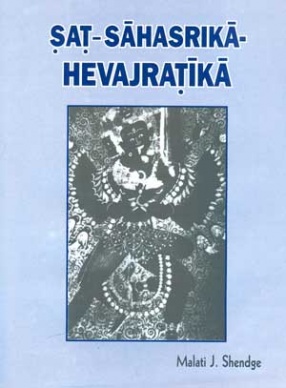Buddhahood in this Body: Japanese Esoteric Buddhism (Shin-gon) in Context
Synopsis
Shin gon is Japanese Trantrism, sect of d True Word (Mantranaya). The dmain body of this work consists of a translation of a 13th c. Japanese wok written by a Japanese Buddhist teacher, Gyonen and entitled Hasahu-koyo-kogi. The language and style are archaic and not easy to translate. This is the First ever English translation conducted by the author at the university of Tokyo. This translation is lucid and easy to understand which is a rare feat to achieve. It is followed by explanatory notes.
But the book's other aspect is the Introduction which is the original contribution of the translator. In the Introduction she has tried to relate the basic principles of Shin gon to Indian and Tibetan Tantrism which are not different. She draws the conclusion that the Shin gon no way differs from Indian Tantrism in which it is rooted as the Sarva-tathagata-tattvasamgraha and Mahavairocana-sutra are the Indian texts in which it is based. Also the main tenet of the Buddha viz achieving the Buddhahood in this very life, is upheld by the founder of Shin gon, Kukai or Kobo Daishi, and is the continuation of the Buddha's teaching.
Although Vijrayana or Mantranya, which is a an aspect of the former, was a later school of Buddhism, it would be wrong to think that it did away with theprimary philosophical and practical teachings of the Buddha. The Buddha's teachings ontinued to be preached and practiced, to which were added a concretization of Buddhist meditative practices through mantra, mudra, mandala etc. The basic tents of Buddhism which continued through all the schools of Buddhism are the context for the philosophical and practical developments.
The book will be welcomed by the Buddhist readership all over the world.
Read more
But the book's other aspect is the Introduction which is the original contribution of the translator. In the Introduction she has tried to relate the basic principles of Shin gon to Indian and Tibetan Tantrism which are not different. She draws the conclusion that the Shin gon no way differs from Indian Tantrism in which it is rooted as the Sarva-tathagata-tattvasamgraha and Mahavairocana-sutra are the Indian texts in which it is based. Also the main tenet of the Buddha viz achieving the Buddhahood in this very life, is upheld by the founder of Shin gon, Kukai or Kobo Daishi, and is the continuation of the Buddha's teaching.
Although Vijrayana or Mantranya, which is a an aspect of the former, was a later school of Buddhism, it would be wrong to think that it did away with theprimary philosophical and practical teachings of the Buddha. The Buddha's teachings ontinued to be preached and practiced, to which were added a concretization of Buddhist meditative practices through mantra, mudra, mandala etc. The basic tents of Buddhism which continued through all the schools of Buddhism are the context for the philosophical and practical developments.
The book will be welcomed by the Buddhist readership all over the world.
29.70
26.73
$
33.00 $
Free delivery Wolrdwidе in 10-18 days
Ships in 1-2 days from New Delhi
Membership for 1 Year $35.00
Get it now and save 10%
Get it now and save 10%
BECOME A MEMBER
Books by the same author









Bibliographic information